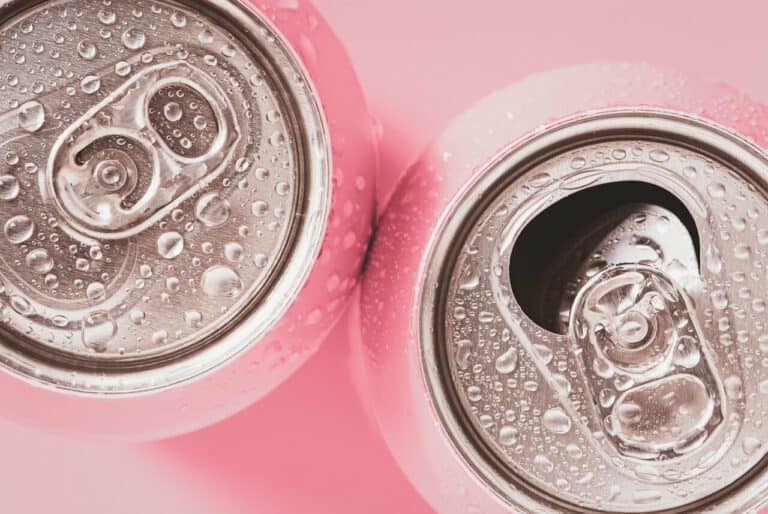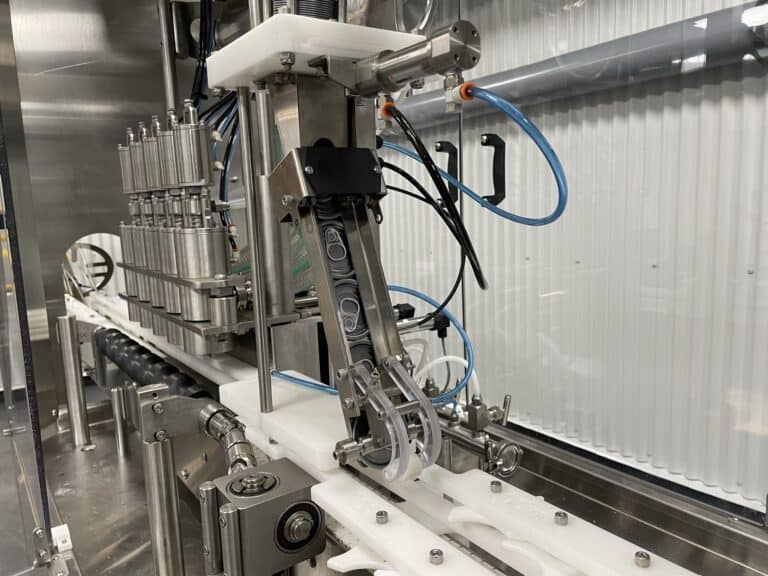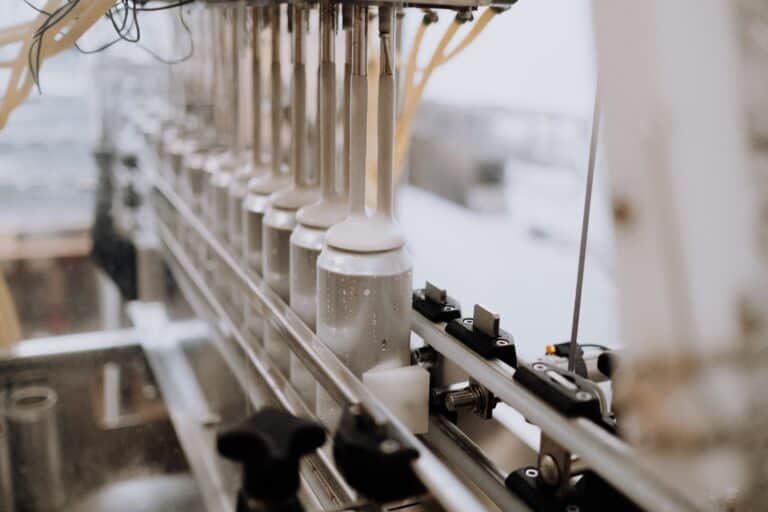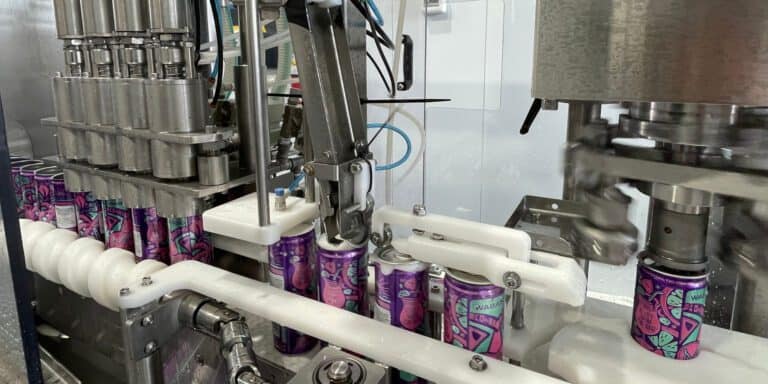The Role Of Nitrogen In Canning: Enhancing Beverage Shelf Life
In today’s fast-paced world, the beverage industry is undergoing a transformative shift. As consumers become increasingly conscious of what they consume, there’s a growing demand for beverages that not only taste fresh but also have an extended shelf life. This demand has propelled manufacturers to explore innovative methods to ensure their products remain as vibrant and flavorful as the day they were created. One such method that has emerged as a game-changer is the use of nitrogen in the canning process. But why nitrogen? And how does it intertwine with the machinery and processes of the modern canning line?
To understand the significance of nitrogen in the canning world, it’s essential first to grasp the challenges faced by beverage producers. The primary challenge? Oxygen. While oxygen is vital for human survival, it’s a nemesis for canned beverages. When beverages come into contact with oxygen, it kickstarts the oxidation process, leading to a myriad of issues such as flavor degradation, discoloration, and a reduction in overall product quality. Enter nitrogen—a gas that’s both abundant in our atmosphere and inert in nature. Its inertness means it doesn’t react with the beverages, making it the perfect candidate to replace oxygen in the canning process.
But the role of nitrogen in canning isn’t just a recent discovery. The idea of using gases to preserve food and beverages dates back several decades. However, with advancements in technology and the evolution of the canning machine, the application of nitrogen has been refined, optimized, and tailored to meet the specific needs of the beverage industry. Today, nitrogen isn’t just a component; it’s an integral part of the canning narrative, shaping the way beverages are produced, stored, and consumed.
Furthermore, the modern consumer is not just looking for quality; they’re seeking an experience. They want to open a can of their favorite beverage and be transported to the moment it was crafted—the aromas, the flavors, the essence. Achieving this requires a harmonious blend of the right ingredients, impeccable production processes, and, of course, state-of-the-art canning machines. These machines, equipped with the latest in nitrogen flushing technology, ensure that every can that rolls off the canning line is a testament to the brand’s commitment to quality and freshness.
However, the journey of nitrogen in the world of canning is not just about enhancing shelf life. It’s a story of innovation, of pushing boundaries, and of redefining what’s possible. It’s about understanding the nuances of each beverage, the vision of each brand, and the expectations of every consumer. And at the heart of this journey is the canning machine—a marvel of modern engineering that seamlessly integrates nitrogen into the canning process, ensuring each beverage is a masterpiece in its own right.
In this article, we’ll delve deep into the world of nitrogen canning. From the science behind its effectiveness to its impact on the beverage industry, we’ll explore every facet of this revolutionary process. We’ll also shed light on the pivotal role of the canning machine and canning line in bringing the benefits of nitrogen to the forefront. So, as we embark on this exploration, let’s raise a toast to nitrogen—the unsung hero of the beverage industry—and to the future of fresher, tastier, and longer-lasting beverages.
1. Background on Canning Process
Alright, folks, let’s hop into our time machines and journey back to a world before Netflix, before smartphones, and yes, even before the internet. A time when the idea of preserving food was as revolutionary as the latest iPhone release today. Welcome to the fascinating world of canning!
Now, imagine you’re a chef in the 1800s. You’ve just whipped up a batch of your grandma’s secret tomato sauce (the one that would make even the toughest critics weep tears of joy). But here’s the catch: You’ve made enough sauce to feed an entire village, and there’s no refrigerator in sight! Enter the hero of our story: the canning process. But this isn’t the sleek, high-tech canning line we’re familiar with today. Oh no, this is old-school, roll-up-your-sleeves, and get-your-hands-dirty kind of canning.
The basic idea behind canning is simple: seal the food in an airtight container and heat it to kill off any pesky microorganisms. It’s like giving your food a warm bath and tucking it into a cozy metal bed, safe from the outside world. But as with any great story, there’s a twist. Remember our nemesis from the introduction? Oxygen! Just like that one friend who always crashes your parties uninvited, oxygen has a knack for sneaking into cans and ruining the fun.
Fast forward to today, and the canning process has undergone a glow-up worthy of a reality TV makeover show. Modern canning machines are like the swanky sports cars of the food industry—sleek, fast, and oh-so-efficient. And the star of this high-tech show? Nitrogen. Think of nitrogen as the bouncer at an exclusive club, keeping the unwanted guests (read: oxygen) out and ensuring the party inside (your delicious beverage) stays fresh and lively.
If we were to describe the canning process, we might say it’s like a dance. The canning machine leads, gracefully filling each can, while nitrogen twirls around, ensuring no oxygen steps on its partner’s toes. It’s a tango of technology and science, with a dash of humor and a sprinkle of magic.
So, the next time you crack open a can of your favorite beverage, take a moment to appreciate the intricate ballet that’s taken place. From the humble beginnings of grandma’s tomato sauce to the cutting-edge canning lines of today, the journey of canning is a testament to human ingenuity, spiced up with a touch of GX Canning Technology.
2. The Science Behind Nitrogen in Canning
Alright, science enthusiasts and curious minds, gather ’round! We’re about to embark on a journey into the effervescent world of nitrogen in canning. And for those who might’ve found science class a tad snoozy, don’t fret. We’re making this as lively and engaging as your favorite comedy show. Ready to dive in? Let’s unravel the mysteries!
First things first: Why nitrogen? Out of all the gases, why does this one get the spotlight in our canning tale? Well, here’s a fun fact: our atmosphere is made up of roughly 78% nitrogen. It’s everywhere, from the air we breathe to the protective packaging of our favorite snacks.
In the canning universe, oxygen is the unwanted guest. It’s responsible for spoilage, off-flavors, and that lackluster flatness in beverages. This is where nitrogen steps in, like a superhero in a cape. When introduced into the canning process, nitrogen effectively pushes out the oxygen, creating a protective environment where beverages can maintain their freshness and zest.
But nitrogen’s role isn’t just about playing defense. It’s an offensive game-changer too. When nitrogen is infused into beverages, it imparts a creamy texture and a velvety smooth mouthfeel. Think about that draft beer or nitro cold brew coffee you love. That silky sensation and those mesmerizing tiny bubbles? All courtesy of nitrogen. It elevates the drinking experience from ordinary to extraordinary.
Now, let’s delve into the world of canning machines and canning lines. The latest machines have mastered the technique of nitrogen dosing. As the beverage fills the can, an exact dose of nitrogen is introduced right before the sealing process. It’s a dance of precision, ensuring that the drink inside remains vibrant and flavorful for an extended period.
In essence, while nitrogen might not be the most talked-about element, its role in the canning process is pivotal. It ensures that every sip from a canned beverage is as delightful and fresh as the brewer intended. So, the next time you crack open a can, take a moment to appreciate the silent guardian – nitrogen – that keeps your drink in prime condition.
3. Benefits of Flushing With Nitrogen in Canning
In the bustling world of beverages, where competition is fierce and consumers’ expectations are sky-high, every detail counts. One such detail, often overlooked but crucial, is the process of nitrogen flushing in canning. Let’s uncork the benefits of this technique and see why it’s a game-changer for the industry.
Preserving Freshness and Flavor
Imagine sipping on a beverage that tastes as if it was made just moments ago, even if it’s been sitting on a shelf for weeks. That’s the magic of nitrogen flushing. By replacing the oxygen inside the can with nitrogen, the process significantly reduces the risk of oxidation. This means no more stale or off-flavors; just pure, unadulterated taste every single time.
Extended Shelf Life
In the business of beverages, time is money. The longer a product can stay on the shelf without compromising its quality, the better. Nitrogen flushing offers an extended shelf life, ensuring that products remain fresh and flavorful for longer periods. This not only reduces waste but also enhances profitability for producers.
Protection Against External Factors
In the business of beverages, time is money. The longer a product can stay on the shelf without compromising its quality, the better. Nitrogen flushing offers an extended shelf life, ensuring that products remain fresh and flavorful for longer periods. This not only reduces waste but also enhances profitability for producers.
Consistency Across Batches
Beyond just oxygen, there are other external factors that can impact the quality of a beverage. Light, moisture, and even certain microorganisms can degrade a product over time. Nitrogen acts as a protective barrier, shielding the beverage from these potential threats. It’s like having an invisible force field around each can, keeping the bad stuff out and the good stuff in.
Eco-friendly Packaging
With the growing emphasis on sustainability, brands are constantly looking for ways to reduce their carbon footprint. Nitrogen flushing allows for thinner and lighter packaging materials, as the strength of the nitrogen compensates for the reduced material. This not only leads to a decrease in packaging waste but also reduces transportation costs, making it a win-win for both the environment and businesses.
The basics of beer canning: everything you need to know
4. The Process of Nitrogen Flushing
The world of canning is a blend of art and science, and nitrogen flushing stands as a testament to this fusion. But how does this seemingly magical process work? Let’s dive deep into the mechanics of nitrogen flushing and unravel the steps that ensure every can of beverage remains as fresh as the day it was produced.
Step 1: Preparing the Can
Before the actual flushing begins, the can needs to be prepared. This involves ensuring it’s clean and free from any contaminants. Modern canning lines often use a combination of air blowers and vacuums to ensure that no foreign particles remain inside the can.
Step 2: Filling the Beverage
Once the can is prepped, it’s time for the star of the show – the beverage – to make its entrance. The canning machine fills the can with the beverage, leaving a small headspace at the top. This headspace is crucial for the nitrogen flushing process, as it’s where the nitrogen will reside.
Step 3: Introducing Nitrogen
As the can moves along the canning line, it reaches the nitrogen flushing station. Here, a precise burst of nitrogen is introduced into the headspace. This nitrogen pushes out the oxygen-rich air, creating an almost oxygen-free environment inside the can.
Step 4: Sealing the Can
Immediately after the nitrogen is introduced, the can is sealed. This rapid sealing is crucial to ensure that the nitrogen-rich environment is maintained inside the can. Modern canning machines are designed to seal cans within milliseconds of the nitrogen flush, ensuring maximum efficiency.
Step 5: Quality Control
No process is complete without a thorough quality check. Post-flushing, cans often undergo a series of tests to ensure the nitrogen levels are optimal. This might involve checking the internal pressure of the can or using sensors to detect the nitrogen concentration. Any cans that don’t meet the set standards are removed from the line.
Step 6: Packaging and Distribution
With the nitrogen flush complete and the quality checks passed, the cans are ready to be packaged and sent out into the world. Thanks to the nitrogen flush, these cans now have a longer shelf life, ensuring they reach consumers in the best possible condition.
5. Case Studies: Brands Benefiting from Nitrogen Canning
The proof of the pudding is in the eating, as they say. While the science and process behind nitrogen canning are fascinating, the real testament to its effectiveness lies in the real-world results. Let’s explore some brands that have embraced nitrogen canning and witnessed tangible benefits.
1. Crafty Ales Brewery
Crafty Ales, a boutique brewery known for its unique flavors, faced a challenge. Their signature IPA, with its delicate floral notes, was losing its freshness too quickly. After switching to nitrogen canning, not only did the IPA’s shelf life increase, but customer feedback also highlighted a noticeable improvement in taste and aroma consistency.
2. Mountain Springs Water Co.
Mountain Springs, a brand synonymous with purity, wanted to ensure their sparkling water retained its crispness over time. With nitrogen canning, they achieved just that. The absence of oxygen meant no flatness, and every can opened delivered the same effervescence as the first day of production.
3. Java Delights Cold Brew
Cold brew coffee is all about the smoothness and depth of flavor. Java Delights, a leading name in cold brews, adopted nitrogen canning to enhance the creaminess of their product. The result? A surge in sales and rave reviews about the velvety texture of their coffee.
4. BerryBurst Juices
Fruit juices are particularly susceptible to oxidation, leading to color and flavor degradation. BerryBurst, a brand celebrated for its vibrant and fresh fruit juices, turned to nitrogen canning to combat this. Today, their juices boast of a vivid color and fresh-from-the-orchard taste, even weeks after production.
5. Golden Grains Lager
Golden Grains, a lager loved for its golden hue and malty undertones, faced a dilemma. Their lagers, when stored for longer durations, began showing signs of discoloration. Nitrogen canning came to the rescue, ensuring that every can poured was as golden and clear as intended.
These brands, among many others, serve as shining examples of the transformative power of nitrogen canning. By prioritizing freshness and quality, they’ve not only enhanced their product offerings but also solidified their reputation in the market. The journey from production to the consumer’s hand is fraught with challenges, but with tools like nitrogen canning, brands can ensure that what the consumer experiences is nothing short of perfection.
6. Environmental Impacts
In today’s world, where sustainability and eco-friendliness are not just buzzwords but imperatives, it’s essential to consider the environmental impacts of any process. So, how does nitrogen canning fare on the green scale?
Reduced Waste: One of the primary benefits of nitrogen canning is the extended shelf life of products. This means fewer products are discarded due to spoilage or degradation. In the long run, this translates to less food and beverage waste, which is a significant step towards sustainability.
Energy Efficiency: Traditional canning methods often require more energy, especially when it comes to sealing and ensuring the can’s contents remain uncontaminated. Nitrogen flushing, being a more streamlined process, can be more energy-efficient, leading to reduced energy consumption in factories and production units.
Decreased Carbon Footprint: With the extended shelf life provided by nitrogen canning, products can be stored for longer without the need for refrigeration. This can lead to significant energy savings and a consequent reduction in the carbon footprint of brands that adopt this method.
Recyclable Cans: Most cans used in the nitrogen canning process are made of materials like aluminum, which are 100% recyclable. This ensures that even after the product inside is consumed, the can doesn’t end up as landfill waste but can be recycled and repurposed.
Safe for Aquatic Life: Nitrogen makes up about 78% of our atmosphere and is a naturally occurring gas. When nitrogen-flushed cans are opened, the gas that’s released poses no harm to the environment. Unlike certain pollutants that can harm aquatic life when they find their way into water bodies, nitrogen is benign.
Reduced Transportation Emissions: With products lasting longer, there’s less urgency to transport them quickly to their destinations. This can lead to more efficient, planned, and bulk transportation, reducing the frequency of shipments and, consequently, the emissions associated with them.
While nitrogen canning offers several environmental benefits, it’s essential for brands to source nitrogen responsibly and ensure that the entire canning process is optimized for minimal environmental impact. By doing so, they can truly champion the cause of eco-friendly production.
7. Future Trends: Nitrogen Canning and Beyond
The world of beverage production is ever-evolving, with technological advancements and innovative methods continually reshaping the landscape. As we gaze into the crystal ball of the beverage industry’s future, it’s evident that nitrogen canning is not just a fleeting trend but a cornerstone of modern canning practices. But what does the future hold for this technique and the broader industry? Let’s delve into some anticipated trends.
Smart Canning Machines: As with many industries, the integration of AI and IoT in canning machinery is on the horizon. Future canning machines might not just flush and seal but could also monitor the quality of the beverage in real-time, adjust nitrogen levels dynamically based on the beverage type, and even predict maintenance needs.
Sustainable Nitrogen Production: As the demand for nitrogen in canning grows, there will be a push towards more sustainable methods of producing the gas. This could involve harnessing renewable energy sources or developing techniques to capture and recycle nitrogen more efficiently.
Custom Nitrogen Mixes: Not all beverages are created equal. In the future, we might see the development of custom nitrogen mixes tailored to specific drinks. For instance, a particular nitrogen blend for carbonated sodas and another optimized for craft beers.
Integration with Blockchain: With the rise of blockchain technology, there’s potential for its integration in the canning industry. This could allow for transparent tracking of the entire canning process, from the source of the nitrogen used to the exact time and conditions of the canning.
Expansion Beyond Beverages: While beverages are the primary focus now, the benefits of nitrogen canning could extend to other products. Think canned soups that taste as fresh as the day they were made, or preserved fruits that retain their just-picked flavor.
Eco-friendly Packaging: Alongside sustainable canning practices, the industry will likely see a surge in eco-friendly packaging innovations. This could range from biodegradable can linings to cans made from recycled or upcycled materials.
Consumer Education: As consumers become more conscious of their choices, brands will likely invest in educating them about the benefits of nitrogen canning. This could involve marketing campaigns, interactive workshops, or even virtual reality experiences that take consumers on a journey through the canning process.
Collaborative Research: The future will likely see more collaboration between beverage producers, canning machine manufacturers, and research institutions. Joint research initiatives could lead to breakthroughs in canning technology, pushing the boundaries of what’s currently possible.
Conclusion
In the vast and intricate world of beverage production, the journey from crafting a unique drink to ensuring it reaches consumers in its prime is filled with challenges and decisions. Among these, the choice of preservation method stands paramount. As we’ve journeyed through the nuances of nitrogen canning, its evident role in the modern canning process is not just a luxury but a necessity for those aiming for the pinnacle of quality.
Nitrogen, often dubbed the ‘silent guardian’ of beverages, plays a pivotal role in safeguarding the integrity, flavor, and freshness of drinks. By displacing oxygen, a primary culprit behind spoilage, nitrogen acts as a protective shield, ensuring that every sip taken by the consumer is as the producer intended. This isn’t just about maintaining taste; it’s about preserving the very essence and story of the beverage, ensuring that the passion and craftsmanship that went into its creation are evident in every can.
For beverage producers teetering on the edge of decision, the benefits of nitrogen flushing are clear. It’s not merely a technical process but a commitment to excellence, a testament to the value placed on quality and consumer experience. In an industry where competition is fierce and consumer expectations are ever-rising, nitrogen canning offers a tangible edge, a means to stand out and proclaim a dedication to unparalleled quality.
In wrapping up our deep dive into the world of nitrogen in canning, one thing is abundantly clear: the future of beverage preservation is here, and it’s filled with the promise of nitrogen. For producers aiming to leave an indelible mark in the industry, now is the time to embrace this game-changer. After all, in the quest for crafting the perfect beverage, shouldn’t every step, including preservation, be in pursuit of perfection?
Shop for high-quality canning equipment
If you want to start a successful beverage enterprise, then acquiring the right machinery for the job is a must. At Geninox Canning, we are ready to provide you with the best manufacturing systems to get your beverage production company up and running. GX CANNING is a division of Geninox






